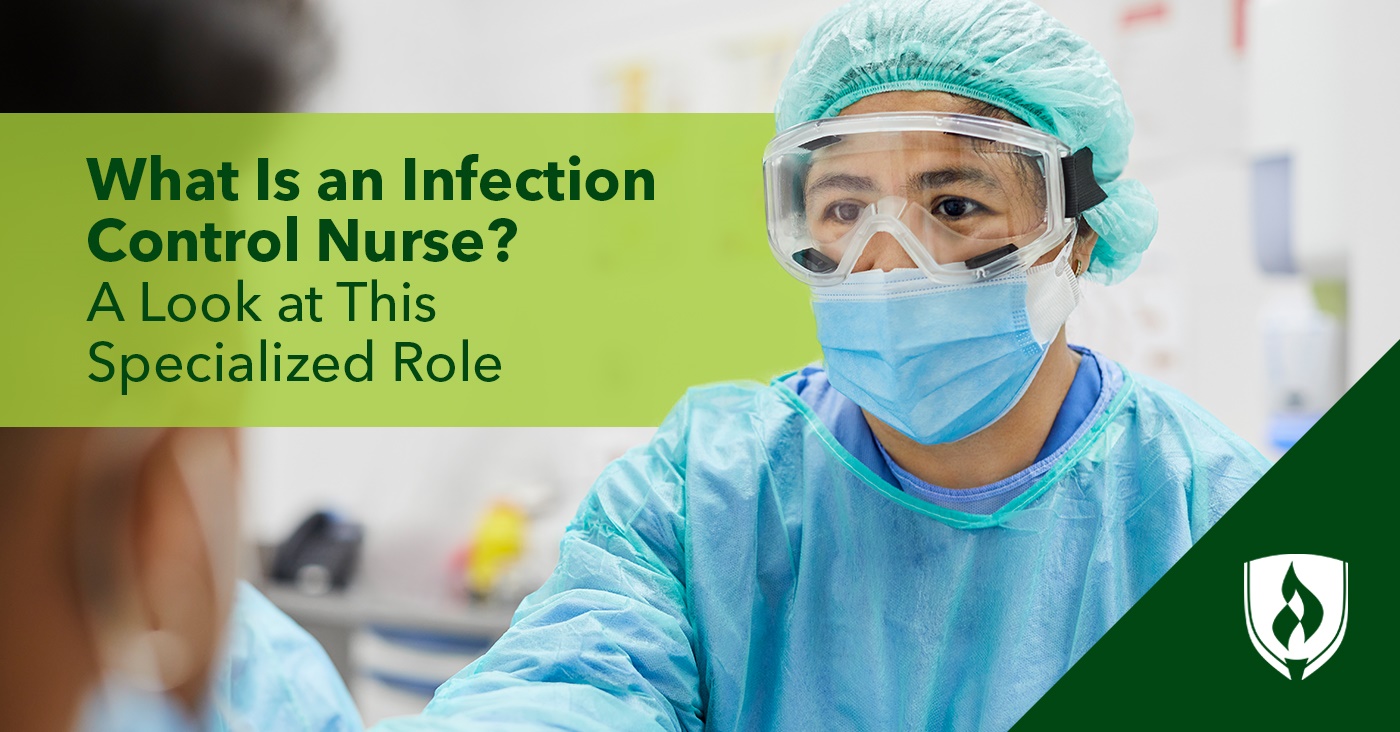
There’s an incredible amount of variety under the umbrella of nursing. If you’re not completely plugged into the field, it can seem like there’s an endless supply of nursing specialties just waiting to pop up on your radar.
On one hand, that can make finding the right type of nursing role to settle into seem a little overwhelming. On the other hand—it’s nice to have options. One impactful, yet lesser-known, path is that of an infection prevention and control nurse. The COVID-19 pandemic has highlighted the extreme importance of this role, but infection control nurses were an essential member of the healthcare system long before 2020.
If you are curious about what an infection control nurse does, read on! We interviewed an expert in infection prevention and control to find out what this role is really like.
What does an infection control nurse do?
While “infection control” might seem like it revolves around keeping an existing infection in a patient under control, that’s underselling their work. Infection control nurses spend more of their energy working on infection prevention than management, according to Ann Marie Pettis, RN, BSN, CIC, FAPIC and president of the Association for Professionals in Infection Control and Epidemiology (APIC). Historically, infection control was a role primarily held by nurses, Pettis says, but the role now includes professionals from other areas of healthcare as well.
A title many of these professionals use now is infection preventionist (IP). And, when it comes to infection, the best defense is a good offense. “Of course, the ‘control’ aspect comes in during an outbreak,” Pettis explains, but IPs mainly work on mitigating and minimizing the risk of infection through prevention strategies.
“Infection prevention is really a unique, niche profession. It’s fascinating!” Pettis laughs. “Our real niche is taking the science of preventing infections and helping everyone implement that at the bedside.”
In this sense, infection control nurses work at more of a macro-level than the average nurse. Instead of working primarily with patients, they work collaboratively with hospital administrators, staff, care providers, community members and more to build systems that minimize infection risk.
This includes creating and improving systems and processes for preventing, identifying, reporting and controlling infections and outbreaks of disease for everyone in their facility or area of practice.
They write procedures, implement a system to catch outbreaks in the earliest possible stages and create a plan of action in case of an outbreak. Infection control nurses spend a lot of time working with other healthcare professionals like directors, physicians, nurses and even maintenance workers to enhance quality assurance and get everyone aligned behind their initiatives.
Where do infection control nurses work?
“Infection preventionists work in so many different spheres,” Pettis says. “Not only every hospital, but every long-term care facility needs them. That’s mandated. But we are seeing amazing expansion into all sorts of venues.”
One IP Pettis worked with was stationed in Hollywood to help entertainment and media companies navigate the pandemic. If you think about how dangerous and expensive outbreaks of a virus can be for a company or an entire industry, you can see why infection control nurses may be able to find work in unconventional settings.
Out of nearly 8,000 job postings for infection preventionists and infection control nurses in the last year, about 50 percent came from hospitals. Another 25 percent of job opportunities came from nursing homes, elderly communities and long-term care facilities.1 After that, postings included the following industries:1
- Universities
- HR programs
- Legislation and government centers
- Religious organizations
- Justice and public safety facilities
- Insurance carriers
- Scientific and technical consulting services
- Travel services
- Amusement and recreation industries
- National security
- Equipment manufacturing
As you can see, infection prevention and control are still primarily located in healthcare, but there’s always a chance you could hold this title and arrive at work in a completely different kind of setting.
How do you become an infection control nurse?
Infection control nurses typically need to be registered nurses (RNs) first. Out of over 3,000 infection control nurse job postings in the last year, about 51 percent required at least an Associate’s degree, with another 46 percent seeking candidates with at least a Bachelor’s degree.1
“I definitely sort of stumbled into infection prevention,” Pettis says. She had been working as a head nurse and felt ready for a change. At one point, Pettis recalls they had an outbreak of Staphylococcus aureus in her nursery and worked closely with an infection preventionist. When this IP later approached Pettis with a job opportunity, she decided to take it. “It was strange because I hated microbiology in nursing school, but I thought, why not? And I’ve loved it ever since.”
“Most IPs stumble onto the career this way; that’s actually something we are feverishly working to change,” Pettis says. When people don’t really realize infection prevention is a career option, there aren’t enough experts to go around. “There is such a demand in this field, and we need to increase our pipeline of candidates.”
Pettis says APIC has been working to build a clear, academic pathway to the infection preventionist career, linking programs and certifications and helping nurses (and other healthcare professionals) gain awareness of the role.
Infection control nurses may choose to pursue a professional certification like the Certification in Infection Prevention and Control (CIC)® credential from the Certification Board of Infection Control and Epidemiology.
What is working in infection prevention like?
“It feels amazing,” Pettis says. “It’s being able to affect health beyond the individual, at such a macro level. You magnify your impact to all the patients in an area. You expand the effect you have on health.”
For example, Pettis shares about a project she worked on with a collaborative team to decrease occurrences of Clostridium difficile (C. diff.) “It was amazing. We had environmental service workers, hospitals and nurses all in our community.” These collaborators met monthly for three years to strategize, eventually including over 100 long-term care facilities.
Their goal was to decrease C. diff by 20 percent by strategizing and getting stakeholders together. “We blew our goal out of the water and decreased C. diff by 30 percent!”
It isn’t always a victory story, of course. During the pandemic, many infection control nurses are facing burnout, just like most healthcare professionals. Pettis describes how difficult it was for so many infection preventionists to leap into a COVID-19 response and watch so many infections they had beaten back resurface in their absence. “Nationally, we’re seeing infections we were doing well with return and attack in a big way.”
Rates of C. diff, Candida auris, catheter-associated urinary tract infections and more have been on the rise, according to Pettis. “You can’t keep all the plates spinning. Unfortunately, some of them have crashed.”
But the pandemic has also led to positive trends in the field. Pettis says infection preventionists see staff are now much better in their use of personal protection equipment, especially around eye protection. “We are also recognizing the importance of providing wellness resources for care providers. Healthcare, and society at large, really needs to step up in that area.”
Thinking beyond the front line
If you think infection prevention and control sounds fascinating, maybe you are the right kind of person to step into this critical role. “The field is not for everybody,” Pettis says. “But for those who decide it’s a good fit, they tend to stay in it for good.”
If you want to become an infection control nurse, becoming an RN is the first step. Check out How to Become an RN Fast: 3 Potential Paths to Pursue to learn more about what your journey could look like!
If you aren’t so sure about infection control and prevention, you might want to check out some of the other amazing nursing specialties out there with the Top 25 Types of Nurses Employers Are Looking to Hire.
1Burning-Glass.com (analysis of 4,710 infection preventionist and 3,289 infection control nurse job postings, Aug. 01, 2020 - Jul. 31, 2021)




